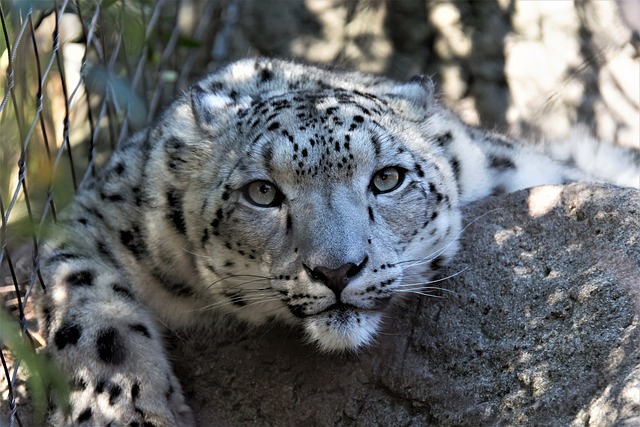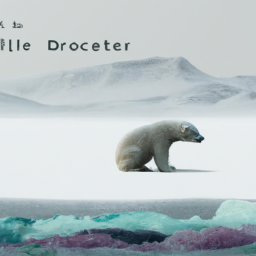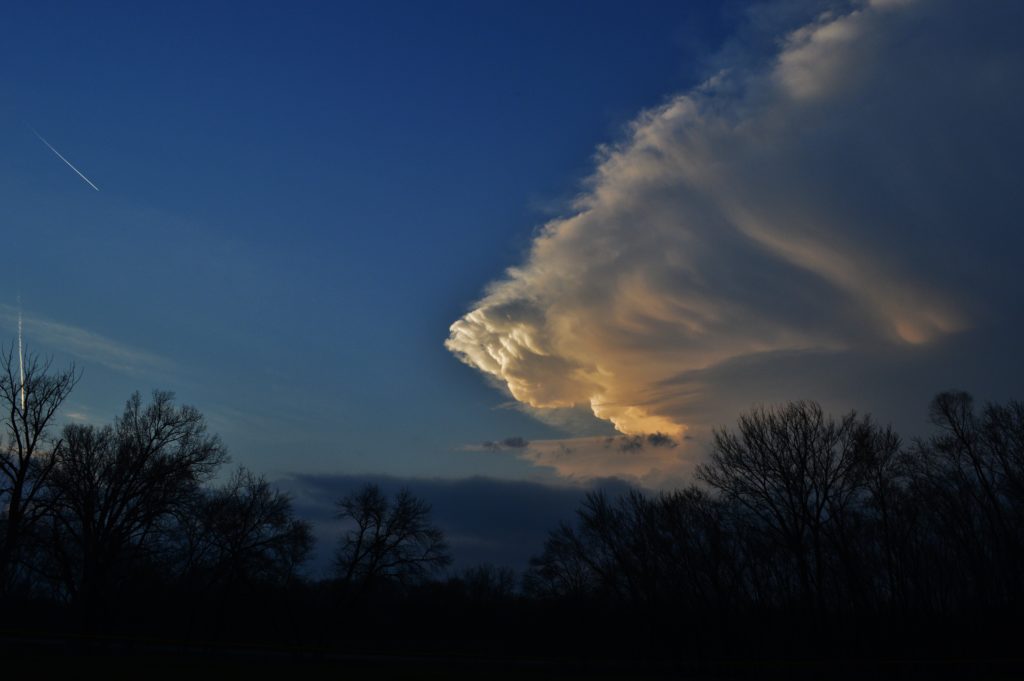Have you ever wondered about the declining biodiversity on our planet? It’s a topic that’s been getting a lot of attention lately, and for good reason. The decline of biodiversity is a global crisis that affects us all. In this article, you’ll learn more about what biodiversity actually means, why it’s important, and the alarming trend of declining wildlife populations since the 1970s. But don’t worry, it’s not all doom and gloom! There are also positive stories of successful conservation efforts and the comeback of certain species. So let’s dive in and explore the fascinating world of biodiversity together.
Curious to know more about the decline of biodiversity and its global impact? In this article, you’ll discover the shocking statistics that reveal just how much wildlife populations have decreased over the past few decades. From the alarming decline in wild mammals to the crucial role of conservation efforts in saving certain species, we’ll delve into the complex web of factors contributing to this crisis. But it’s not all bad news! You’ll also learn about the hopeful signs of recovery and the inspiring success stories that remind us of the power and importance of protecting biodiversity. So join us as we uncover the truth behind this pressing issue and explore the ways we can make a difference.

Introduction
Biodiversity refers to the variety of species and ecosystems on Earth. It encompasses the incredible diversity of life that exists in our planet, from the smallest microorganisms to the largest mammals. However, in recent years, there has been a significant decline in biodiversity, posing a serious threat to the delicate balance of our ecosystems.
What is Biodiversity?
Definition and Importance of Biodiversity
Biodiversity can be defined as the variety of life forms in a particular habitat or on Earth as a whole. It encompasses three main components: genetic diversity, species diversity, and ecosystem diversity. Genetic diversity refers to the variety of genes within a particular species and is crucial for adaptation and resilience. Species diversity refers to the number and variety of species in a given area, and it is fundamental for the stability and functioning of ecosystems. Ecosystem diversity refers to the variety of habitats and ecosystems on Earth, each with its unique set of species and environmental conditions.
Biodiversity is of utmost importance for the health and well-being of our planet and its inhabitants. It provides essential ecosystem services, such as oxygen production, water purification, soil fertility, nutrient cycling, and pollination. Additionally, biodiversity supports the development of new medicines and provides us with aesthetic, cultural, and recreational value. It is also closely linked to food security, as diverse ecosystems are more resilient to climate change and other disturbances.
The Declining Biodiversity
Overview of the Global Crisis
Unfortunately, the global decline in biodiversity has reached crisis levels. According to a report by the World Wildlife Fund (WWF), wildlife populations have declined by an alarming 68% since 1970. This decline is mainly driven by human activities, such as habitat destruction, pollution, climate change, overexploitation, and invasive species. These pressures have pushed many species to the brink of extinction and have caused irreversible damage to ecosystems across the globe.
Factors Contributing to the Declining Biodiversity
There are several factors contributing to the rapid decline of biodiversity. One of the primary drivers is habitat destruction and fragmentation. As human populations continue to grow and expand, natural habitats are being converted into agricultural land, urban areas, and infrastructure. This loss of habitat leaves many species without a suitable place to live, disrupts ecological processes, and reduces the overall quality of ecosystems.
Another significant factor is pollution, both chemical and plastic. Pollution from agricultural runoff, industrial processes, and improper waste disposal contaminates water bodies, soils, and the air, harming both terrestrial and aquatic ecosystems. Plastic pollution, in particular, poses a severe threat to marine life, with millions of marine animals dying each year due to entanglement and ingestion of plastic debris.
Climate change is also a major driver of biodiversity loss. Rising temperatures, melting ice caps, changing precipitation patterns, and increased frequency of extreme weather events are disrupting ecosystems and pushing species out of their preferred habitats. The inability of many species to adapt quickly enough to these changes exacerbates their vulnerability to extinction.
Finally, overexploitation of natural resources, such as overfishing and illegal wildlife trafficking, is pushing many species to the brink of extinction. Unsustainable practices and the demand for wildlife products, such as ivory, rhino horn, and exotic pets, are decimating populations of iconic species and driving them towards extinction.
Wildlife Populations since 1970
Significant Decline in Wildlife Populations
The decline in wildlife populations since 1970 is staggering. According to the WWF report, global populations of mammals, birds, reptiles, amphibians, and fish have declined by an average of 68% in just over half a century. This decline is a clear indication of the unsustainable way we are treating our planet and the severe consequences it has for both wildlife and human well-being.
Examples of Declining Species
The declining biodiversity is not limited to a few isolated cases. It is a global phenomenon affecting a wide array of species across various ecosystems. Some of the most iconic and vulnerable species include tigers, elephants, polar bears, orangutans, rhinos, and sharks. These species, once abundant and widely distributed, are now facing extinction due to habitat loss, poaching, and climate change.
Exceptions to the Decline
Animal Populations with Increasing Numbers
Although the declining biodiversity is alarming, it is essential to note that not all animal populations are in decline. According to the same WWF report, around half of all animal populations have been increasing since 1970. This increase is primarily seen in species that have adapted well to human-dominated landscapes, such as certain bird species that thrive in urban areas or agricultural fields.
These increasing populations serve as a reminder that conservation efforts can make a difference and that humans have the power to protect and restore habitats for the benefit of wildlife.
Impact of Humans on Wild Mammals
Wild Mammal Decline since the Rise of Humans
Wild mammals have experienced a shocking decline since the rise of humans. According to a study published in the journal PNAS, wild mammal populations have declined by a staggering 85% since prehistoric times. This decline can be attributed to multiple factors, including habitat destruction, fragmentation, hunting, and the introduction of invasive species.
Percentage of Wild Mammals in the World
Despite their ecological importance and cultural significance, wild mammals make up only a few percent of the world’s mammals. Domesticated livestock, such as cattle, goats, and pigs, make up a much larger proportion due to human demand for meat, milk, and other animal products. This highlights the significant impact that humans have on the composition and distribution of mammal populations.
Conservation Efforts
Successes in Conservation
Despite the grim picture of declining biodiversity, there have been notable successes in conservation efforts. Many species that were once on the brink of extinction have made remarkable comebacks due to dedicated conservation actions. For example, the bald eagle, the gray wolf, and the southern white rhinoceros have all experienced population recoveries thanks to targeted conservation efforts and legal protections.
These success stories serve as a reminder that conservation works and that with sufficient resources, political will, and public support, we can reverse the declining biodiversity.
Restoration and Recovery of Wild Mammals
In recent years, there has been a growing focus on the restoration and recovery of wild mammal populations. Conservation organizations and governments around the world are implementing measures to protect and restore habitats, control invasive species, and reduce the impacts of human activities on wildlife.
Efforts such as rewilding, which involves reintroducing locally extinct species and restoring their ecological roles, have shown promising results. By restoring key habitats and creating wildlife corridors, we can allow for the movement and expansion of wild mammal populations, helping them recover and thrive.
Conservation Efforts in Europe
Specific Examples of Conservation Successes in Europe
Europe has seen significant conservation successes in recent years. The reintroduction of the Eurasian beaver in various European countries, such as the United Kingdom and Sweden, has helped restore river ecosystems and increase biodiversity. The conservation of the Iberian lynx in Spain and Portugal has prevented its extinction and allowed the population to slowly recover. In France, the reintroduction of the European bison has led to the restoration of natural grazing ecosystems and the return of other species that depend on these habitats.
These examples highlight the effectiveness of conservation efforts when there is strong political support, public engagement, and collaboration between stakeholders.
Conclusion
The declining biodiversity is a global crisis that requires urgent action. The loss of species and ecosystems not only threatens the survival of countless organisms but also jeopardizes the health and well-being of human societies. However, there is hope. Conservation efforts and international collaborations have shown that we can make a positive impact and protect the incredible diversity of life on Earth.
By addressing the root causes of biodiversity loss, such as habitat destruction, pollution, climate change, and overexploitation, and by implementing sustainable practices and policies, we can ensure a future where biodiversity thrives, ecosystems flourish, and humans coexist harmoniously with nature. It is up to all of us to take action, make conscious choices, and support conservation efforts to safeguard the precious gift of biodiversity for generations to come.
More Resources and information
United Nations (https://www.un.org)



